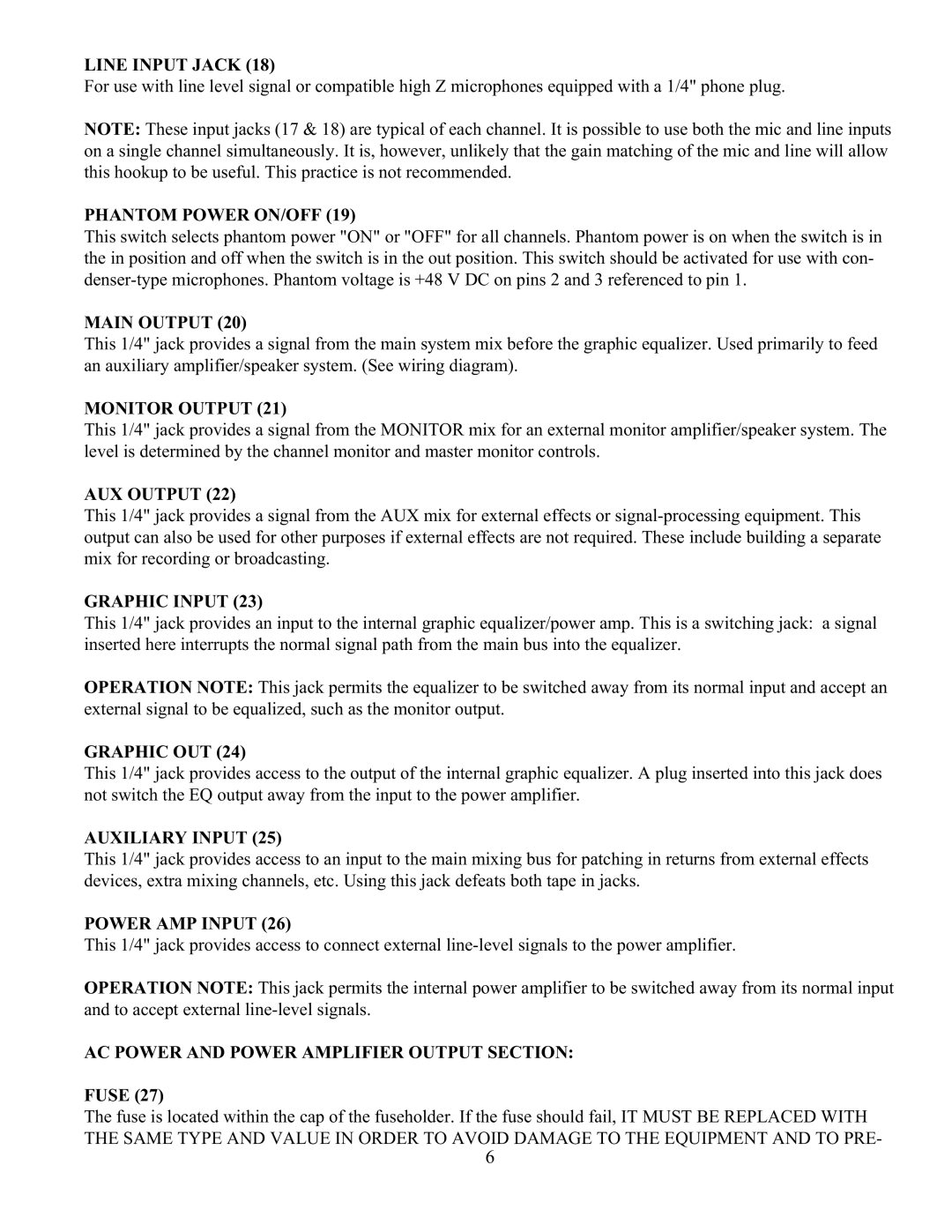LINE INPUT JACK (18)
For use with line level signal or compatible high Z microphones equipped with a 1/4" phone plug.
NOTE: These input jacks (17 & 18) are typical of each channel. It is possible to use both the mic and line inputs on a single channel simultaneously. It is, however, unlikely that the gain matching of the mic and line will allow this hookup to be useful. This practice is not recommended.
PHANTOM POWER ON/OFF (19)
This switch selects phantom power "ON" or "OFF" for all channels. Phantom power is on when the switch is in the in position and off when the switch is in the out position. This switch should be activated for use with con-
MAIN OUTPUT (20)
This 1/4" jack provides a signal from the main system mix before the graphic equalizer. Used primarily to feed an auxiliary amplifier/speaker system. (See wiring diagram).
MONITOR OUTPUT (21)
This 1/4" jack provides a signal from the MONITOR mix for an external monitor amplifier/speaker system. The level is determined by the channel monitor and master monitor controls.
AUX OUTPUT (22)
This 1/4" jack provides a signal from the AUX mix for external effects or
GRAPHIC INPUT (23)
This 1/4" jack provides an input to the internal graphic equalizer/power amp. This is a switching jack: a signal inserted here interrupts the normal signal path from the main bus into the equalizer.
OPERATION NOTE: This jack permits the equalizer to be switched away from its normal input and accept an external signal to be equalized, such as the monitor output.
GRAPHIC OUT (24)
This 1/4" jack provides access to the output of the internal graphic equalizer. A plug inserted into this jack does not switch the EQ output away from the input to the power amplifier.
AUXILIARY INPUT (25)
This 1/4" jack provides access to an input to the main mixing bus for patching in returns from external effects devices, extra mixing channels, etc. Using this jack defeats both tape in jacks.
POWER AMP INPUT (26)
This 1/4" jack provides access to connect external
OPERATION NOTE: This jack permits the internal power amplifier to be switched away from its normal input and to accept external
AC POWER AND POWER AMPLIFIER OUTPUT SECTION:
FUSE (27)
The fuse is located within the cap of the fuseholder. If the fuse should fail, IT MUST BE REPLACED WITH THE SAME TYPE AND VALUE IN ORDER TO AVOID DAMAGE TO THE EQUIPMENT AND TO PRE-
6
